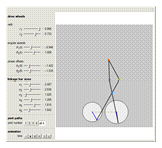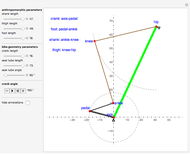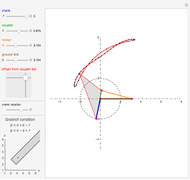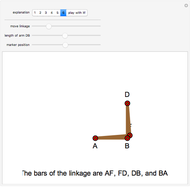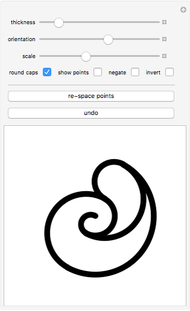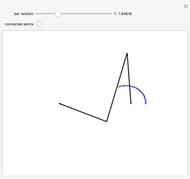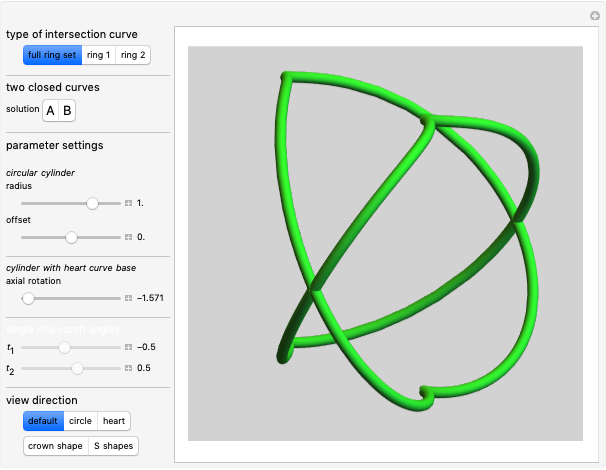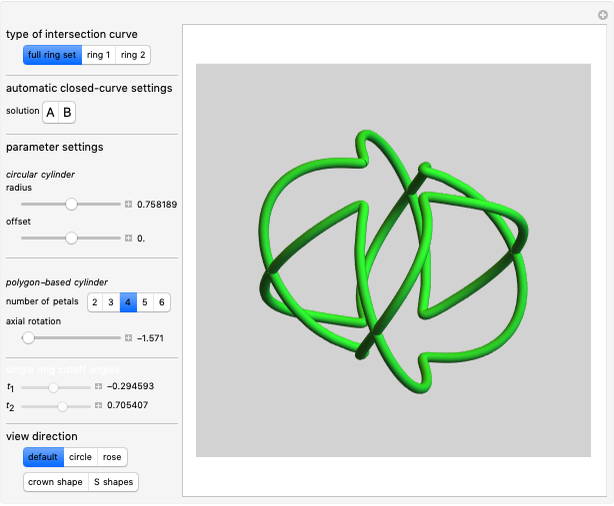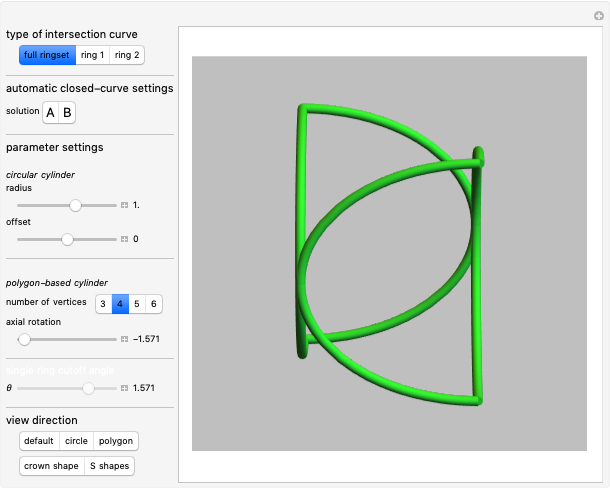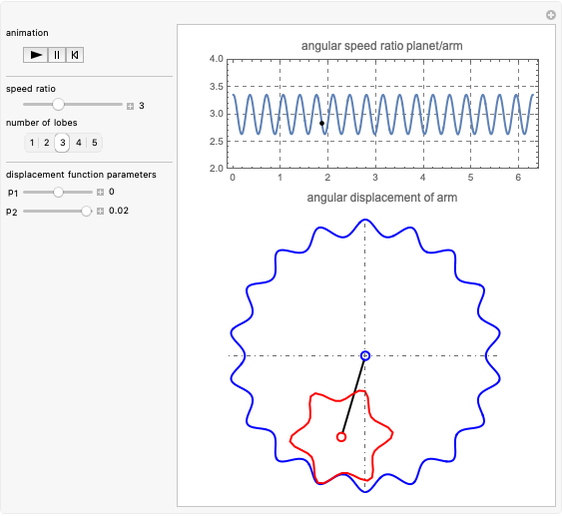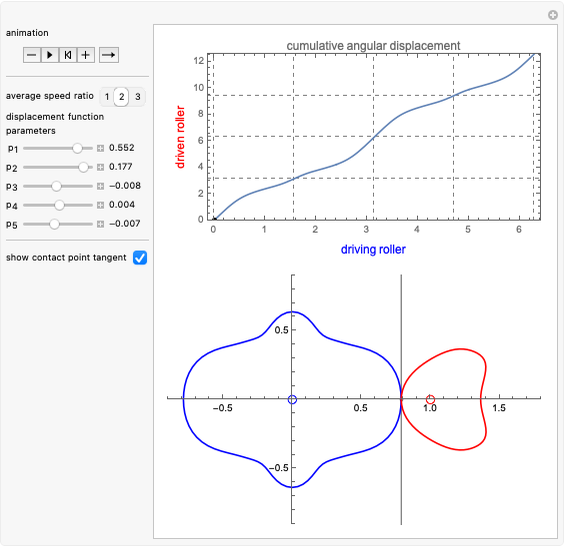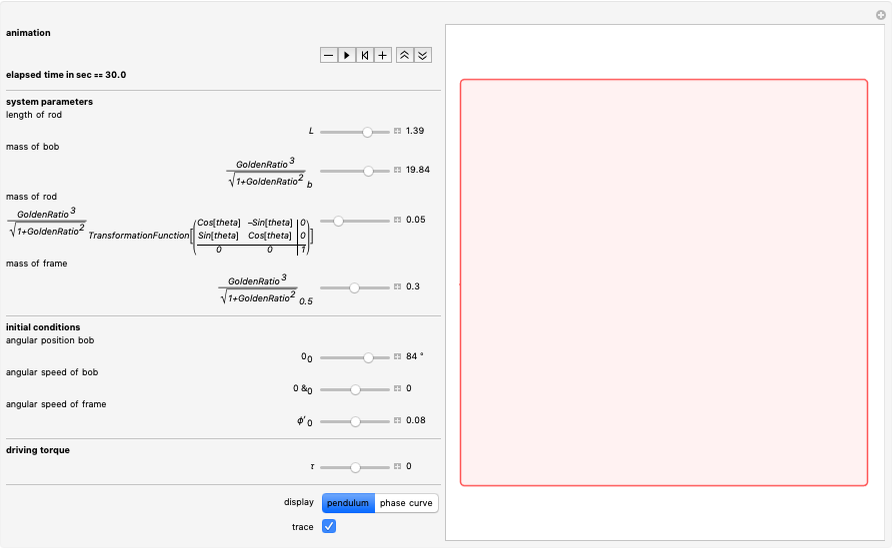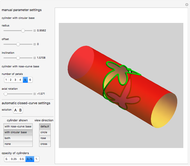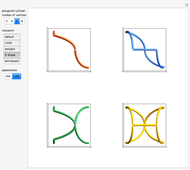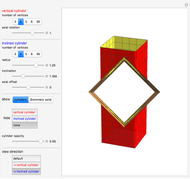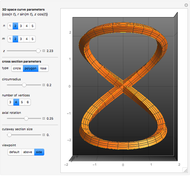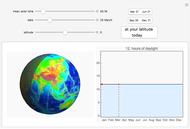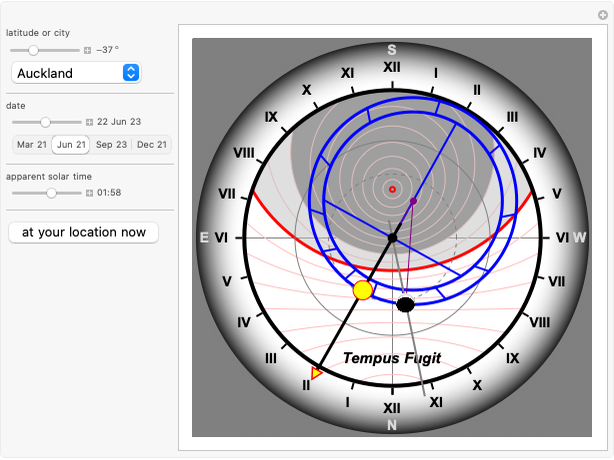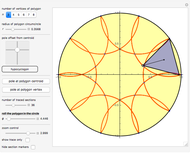Designs from Mechanical Linkages

Requires a Wolfram Notebook System
Interact on desktop, mobile and cloud with the free Wolfram Player or other Wolfram Language products.
The paths of the joints of mechanical linkages have been used extensively to make all sorts of artistic designs: pantographs, pintographs, harmonographs, and so on.
[more]
Contributed by: Erik Mahieu (November 2015)
Open content licensed under CC BY-NC-SA
Snapshots
Details
The Chebychev–Grübler–Kutzbach criterion states that  , where in this Demonstration
, where in this Demonstration  is the number of degrees of freedom,
is the number of degrees of freedom,  is the number of links,
is the number of links,  is the number of joints, and
is the number of joints, and  is the number of ternary links. The two ternary links are the ones connecting three joints, and the remaining five links are binary links connecting two joints.
is the number of ternary links. The two ternary links are the ones connecting three joints, and the remaining five links are binary links connecting two joints.
Reference
[1] Wikipedia."Chebychev–Grübler–Kutzbach Criterion." (Nov 17, 2015) en.wikipedia.org/wiki/Chebychev–Grübler–Kutzbach_criterion.
Permanent Citation
"Designs from Mechanical Linkages"
http://demonstrations.wolfram.com/DesignsFromMechanicalLinkages/
Wolfram Demonstrations Project
Published: November 23 2015


